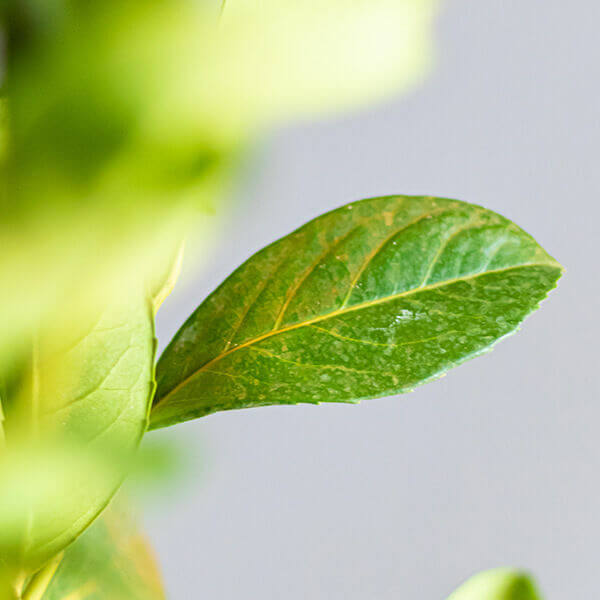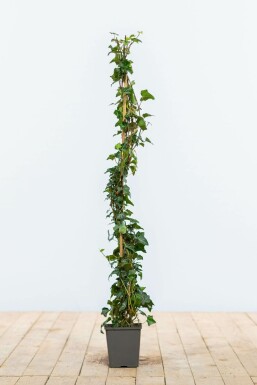Best Hedge Plants For Busy Roads
Best Hedge Plants For Busy Roads
Blog Article
Hedging Plants For Large Gardens
Improve your garden's appeal with lush hedge ranges such as Yew (Taxus), Thuja, Laurel, Photinia, and Bamboo, celebrated for their structural stability and environmental advantages.
Yew and Thuja offer evergreen coverage and winter season durability, while Laurel uses fast development and broad, fragrant leaves.
Photinia includes seasonal charm with its dynamic red foliage, and Bamboo lends a low-maintenance, serene ambiance.
These hedges enhance air quality, reduce sound, and develop tranquil, private areas.
Proper planting, spacing, and upkeep make sure vigorous growth and eco-friendly harmony.
Check out how these lavish varieties can raise your garden's beauty and well-being.
Key Takeaways
Change Your Garden With Lush Hedge Ranges
- Select Yew for its dense, evergreen growth and unrivaled durability.
- Select Laurel for its quick growth and broad leaves, ensuring fast personal privacy.
- Pick Photinia for its dynamic seasonal foliage, which turns a striking dark red.
- Utilize Bamboo for a low-maintenance, winter-hardy hedge with visual appeal.
- Area plants 2-3 per meter and prune routinely for optimum growth and health.
Popular Hedge Plants
When changing a garden with lavish hedge ranges, it's important to think about popular hedge plants such as Yew, Thuja, Laurel, and Photinia due to their special characteristics and benefits.
Yew (Taxus) is extremely respected for its longevity and dense, green development, making it a prime option for withstanding landscapes.
Thuja is kept in mind for its evergreen foliage and robust winter strength.
Photinia adds seasonal vibrancy with red leaves that darken gradually, producing dynamic visual appeal.
Laurel provides quick development and aromatic, broad leaves, perfect for fast personal privacy.
In Addition, Bamboo is an exceptional option for ambiance, using a low-maintenance, winter-hardy alternative that boosts the garden's visual with its classy, swaying walking sticks.
These selections cater to a variety of horticultural requirements and choices.
Benefits of Garden Hedges
Garden hedges offer a wide range of benefits, making them a valuable addition to any landscape. These natural barriers are affordable to implement and supply considerable wind security, enhancing air blood circulation and adding to noise reduction. The thick foliage of hedges like Thuja and Beech ensures personal privacy by obstructing visibility, developing a remote and serene environment.
Hedges likewise play an essential role in microclimate policy, providing a stable environment that fosters plant development and reduces temperature level changes. Their intricate leaf structures filter contaminants, improving air quality and adding to a much healthier garden community.
Moreover, hedges master noise decrease, absorbing and deflecting acoustic waves to lower ambient noise levels. This dual performance of providing both acoustic and visual privacy boosts the overall harmony and aesthetic appeal of any garden.
Planting and Maintenance Tips
For an effective hedge, meticulous preparation of the planting area is vital. Ensure the soil has correct pH and drain to support strong root development.
Space the plants appropriately for the selected types. Water the hedge frequently throughout its initial growth stage, changing as needed with seasonal changes.
Implement a methodical bug control and illness prevention strategy, using chemical or natural treatments when essential. Regularly inspect for aphids, mites, and fungal infections.
Apply mulch to maintain wetness and suppress weeds. Seasonal pruning promotes dense growth and air flow, vital for plant health.
Following these standards will assist you cultivate a vibrant, well-maintained hedge that improves the charm of your garden.
Spacing and Cutting Standards
Spacing and Cutting Guidelines
Appropriate spacing and trimming are important for cultivating healthy, visually appealing hedges. Sufficient spacing makes sure each plant gets sufficient nutrients, light, and air flow.
Follow these guidelines for ideal hedge upkeep:
- Spacing: Position hedge plants 2-3 plants per meter to encourage robust growth.
- Pruning Techniques: Regular pruning is essential for maintaining desired hedge height and shape. Cut new development in summer season and cut down older wood throughout winter.
- Seasonal Care: Adjust trimming schedules and methods according to seasonal requirements to ensure plant health.
- Hedge Height: Frequently display and trim to keep the preferred hedge height and accomplish consistent aesthetics.
Complying with these steps will ensure your hedge grows, boosting both the appeal and functionality of your garden.
Choosing the Right Hedge
Picking the Right Hedge
Choosing the suitable hedge involves assessing elements such as mature height, foliage density, and environmental durability. Effective hedge plant selection requires comprehending each types' development qualities and site-specific adaptability.
For instance, Yew (Taxus) provides excellent durability and dense development, while Thuja is noteworthy for its winter season durability. In addition, thinking about upkeep requirements is crucial; fast-growing types like Laurel or Privet demand routine trimming, whereas low-maintenance choices like Bamboo or Ivy might be preferable for those looking for minimal maintenance.
Environmental aspects such as soil type, light availability, and wetness conditions must likewise guide the choice process. This mindful approach makes sure the picked hedges will flourish, supplying both practical and aesthetic advantages to the garden landscape.
Delivery and Planting Suggestions
To ensure your hedge plants flourish, they need to be delivered by specialized couriers and planted immediately upon arrival.
Follow these essential steps for successful planting:
- Soil Preparation: Improve the soil with raw material to enhance drainage and nutrient material.
- Planting Depth: Create a trench twice the width and equivalent to the depth of the root ball.
- Watering Strategies: Water thoroughly after planting, keeping the soil consistently damp however not filled.
- Mulching: Use a layer of mulch to retain moisture and suppress weeds.
Client Assistance and Service
Offered the vital role of timely assistance in horticultural pursuits, our customer support group is available 6 days a week through telephone, e-mail, and social networks to use skilled recommendations and swiftly resolve any concerns. Their devotion to quick action times guarantees consumer complete satisfaction by resolving inquiries related to plant health, optimum planting methods, and upkeep schedules.

-------------------
Email
This detailed assistance system, reinforced by an outstanding 9.3/ 10 consumer rating, highlights our commitment to improving the gardening experience for every single customer.
Frequently Asked Questions
For How Long Does It Take for Hedge Plants to Develop?
Hedge plants normally need one to 3 years to end up being totally developed, with the specific period differing by species and growing conditions.
Efficient care during this crucial period is important for robust growth. Constant watering, alert weed control, and proper fertilizer application are essential in promoting strong root advancement.
For instance, fast-growing types like Laurel might develop quicker, while slower-growing varieties such as Yew might take longer. Thorough upkeep speeds up the establishment process, resulting in thick and healthy hedges.
What Are the very best Hedge Plants for Privacy?
The concern of the finest hedge plants for personal privacy involves evaluating evergreen and deciduous alternatives.
Evergreen hedges like Thuja, Laurel, and Cypress supply year-round coverage, ensuring constant personal privacy.
In contrast, deciduous hedges such as Beech offer seasonal privacy, shedding leaves in cooler months.
Key maintenance pointers for personal privacy hedges include routine trimming, fertilizing in spring, and proper spacing-- normally 2 to 3 plants per meter.
Furthermore, consistent watering and thorough weed removal are vital for promoting healthy, thick growth.
Can Hedge Plants Draw In Wildlife to My Garden?
Yes, hedge plants can attract wildlife to your garden by supplying vital advantages like shelter, food, and nesting websites, thereby improving local biodiversity. Yew, holly, and laurel are excellent for bring in birds, while ivy supports a variety of bugs.
Nevertheless, it is necessary to keep in mind that there are some disadvantages, such as increased upkeep to manage pests and routine upkeep. Carefully picking and preserving hedge ranges can help stabilize these benefits and disadvantages, ultimately cultivating a sustainable and dynamic environment in your garden.
Are There Any Flowering Hedge Plants Available?
Yes, there are flowering hedge plants readily available that can boost the beauty of your garden.
For example, Elaeagnus, likewise called Olive Willow, produces fragrant white flowers in the fall, adding a touch of beauty.
Photinia, another popular option, showcases lively red leaves that mature into a rich green, producing a vibrant visual result throughout the seasons.
To ensure these plants thrive, it's necessary to practice correct pruning strategies and seasonal upkeep, such as trimming new growth in the summertime and cutting back in the winter season.
These procedures will assist keep the health and visual appeal of your blooming hedges.
How Do I Avoid Insects in My Hedge Plants?
To prevent insects in hedge plants, employ natural bug control approaches and keep correct hedge care. Present beneficial insects like ladybugs, which take advantage of harmful bugs, to develop a well balanced ecosystem.
Routinely check your hedges for indications of problem and promptly remove any affected parts to avoid the spread. Ensure the health of your hedges by using balanced fertilizers and supplying adequate water.
Utilize mulching to keep soil wetness and correct spacing to lower plant tension and promote robust development. These practices collectively assist in lessening pest problems and keeping a healthy hedge.
Conclusion
In essence, selecting the ideal hedge ranges such as Yew, Thuja, and Laurel can change any garden into a relaxing sanctuary. These plants supply year-round plant, boost visual appeal, and offer useful benefits like noise reduction and wind protection.
Proper planting techniques, precise spacing, constant watering, and seasonal trimming are important for optimum growth.
Reliable shipment services and skilled consumer support guarantee a smooth experience from purchase to planting, making it easier than ever to raise your outdoor space.
Garden hedges offer a plethora of benefits, making them a valuable addition to any landscape. These natural barriers are cost-efficient to get more info implement and offer considerable wind protection, improving air blood circulation and contributing to noise decrease. The thick foliage of hedges like Thuja and Beech ensures personal privacy by obstructing visibility, creating a tranquil and remote environment.

Pruning Strategies: Regular pruning is necessary for maintaining desired hedge height and shape. Cut brand-new growth in summertime and cut back older wood throughout winter season.
Report this page